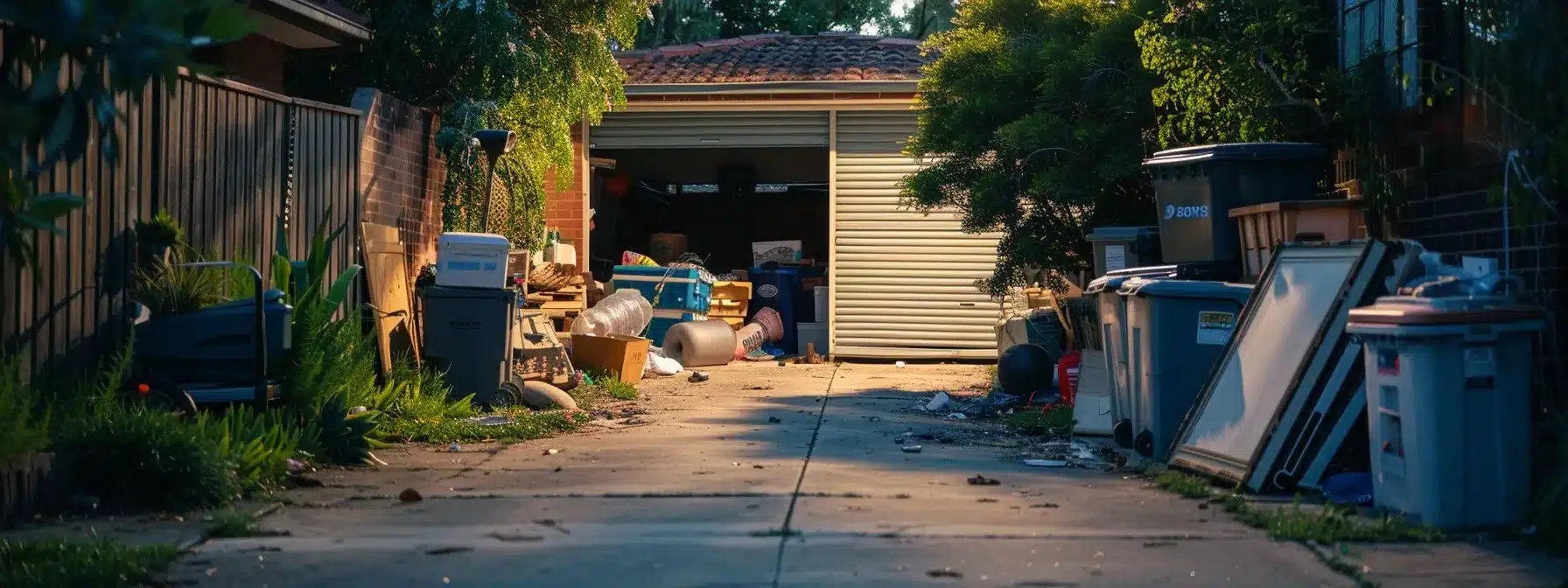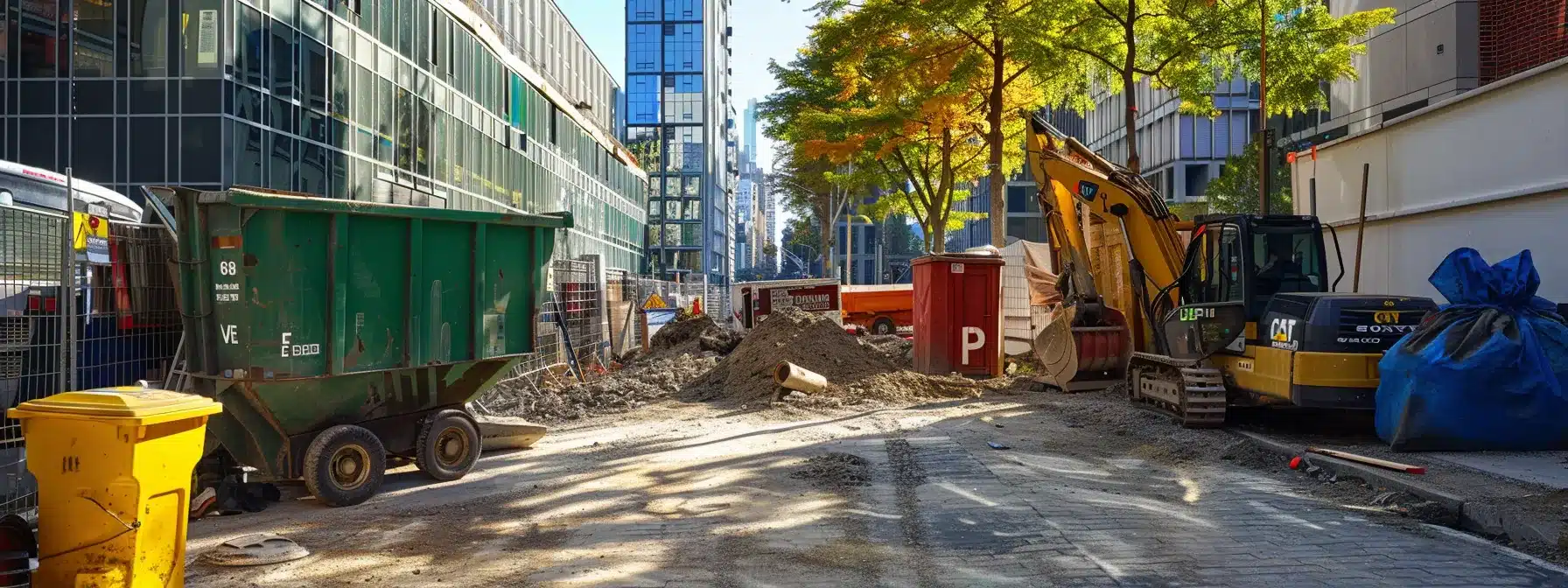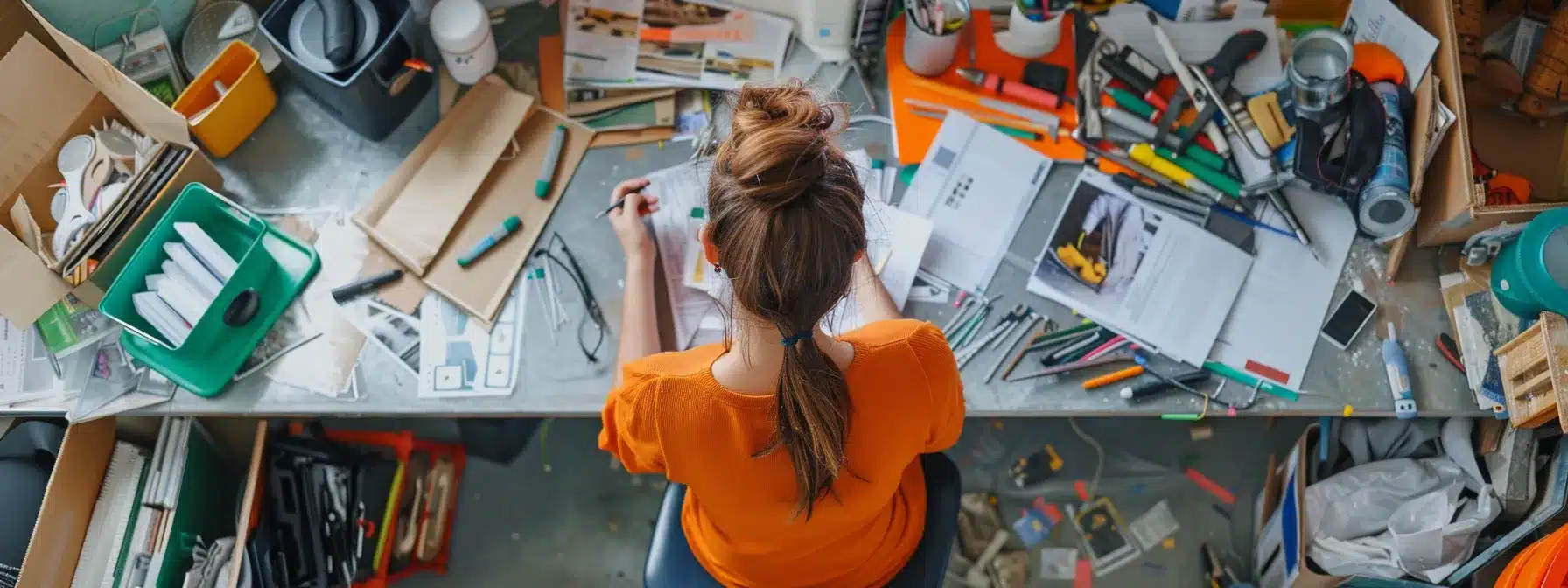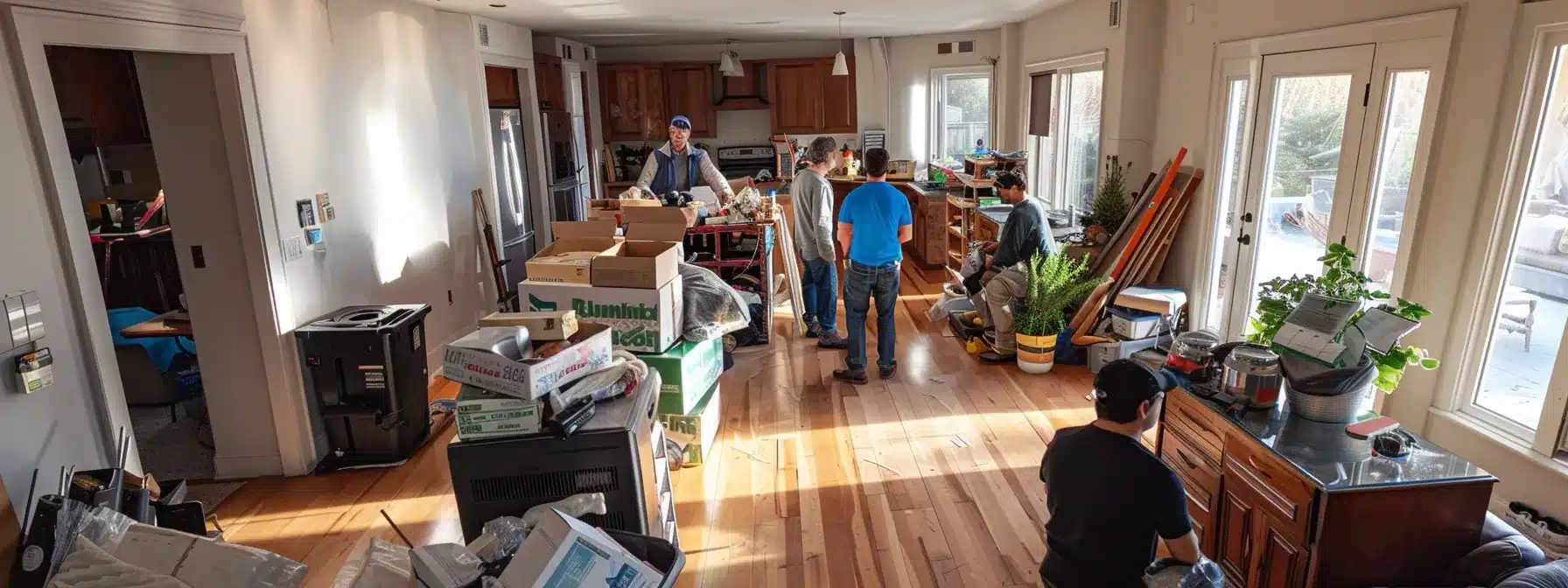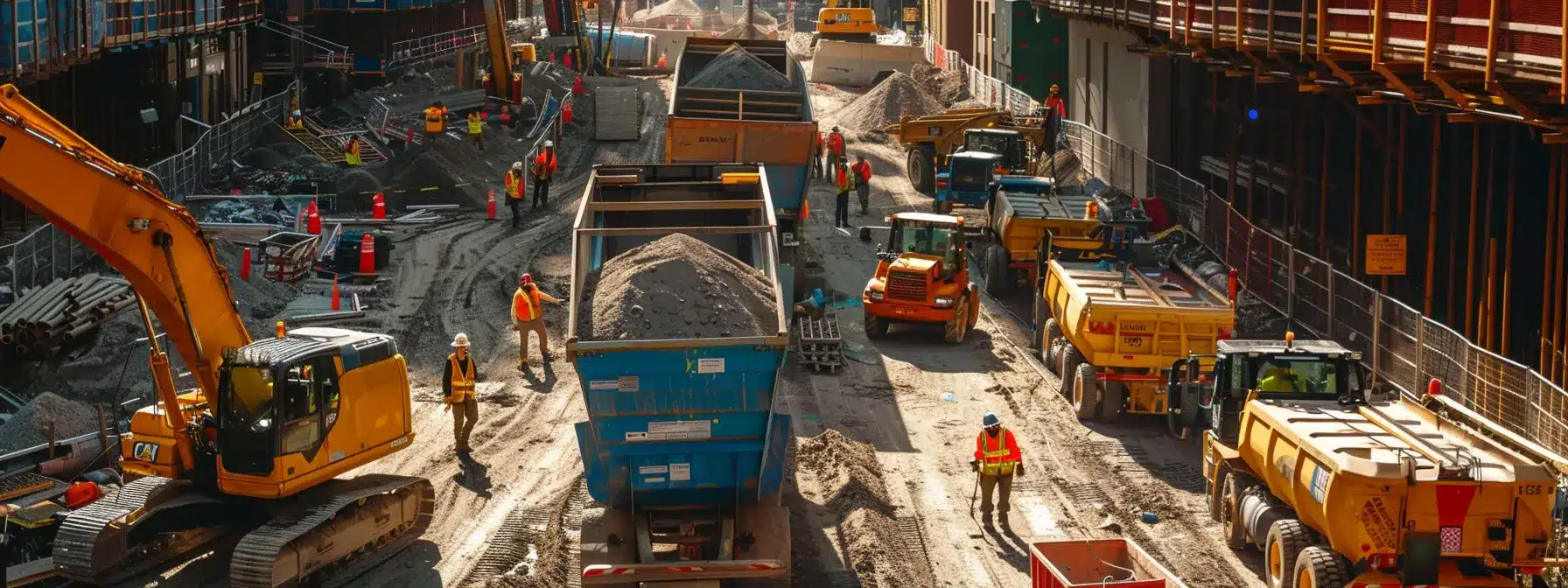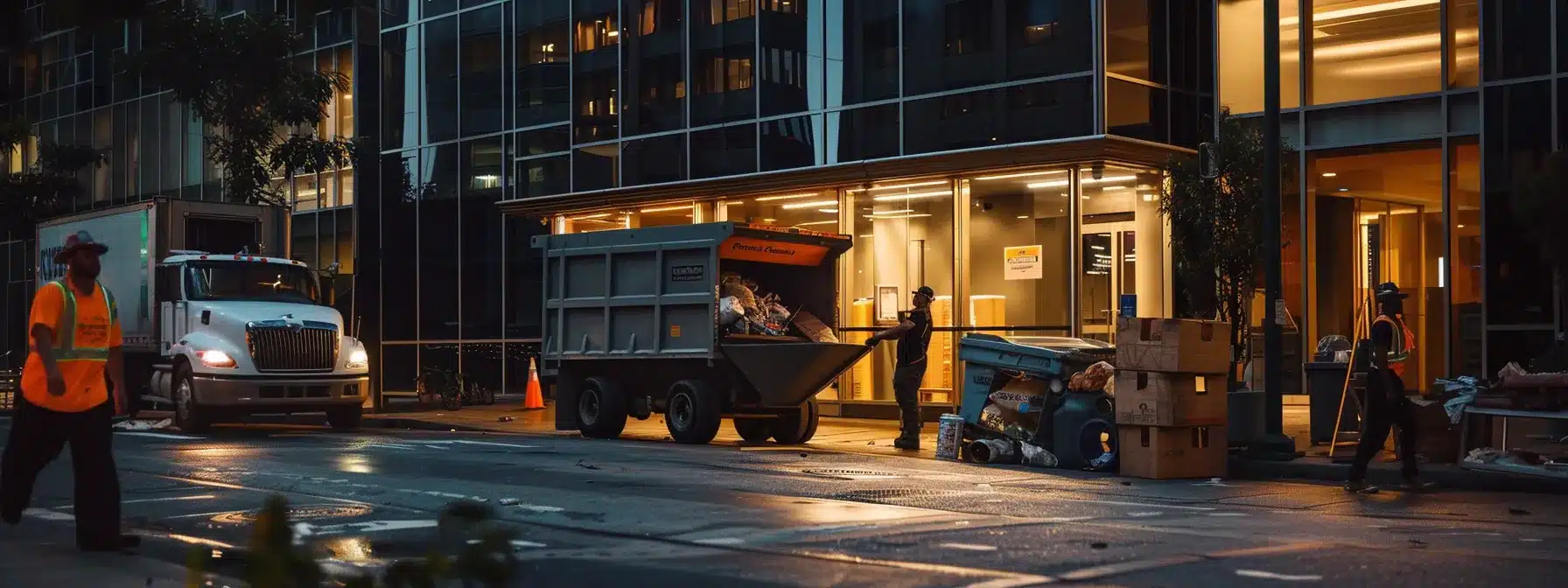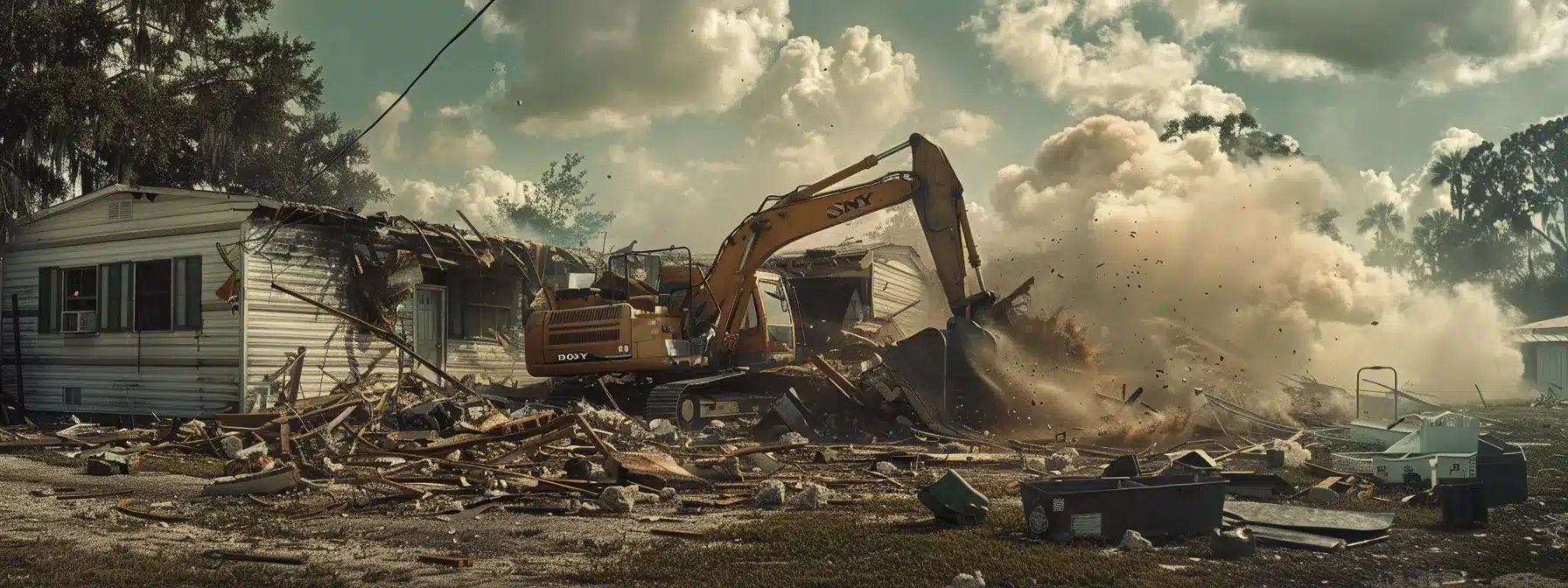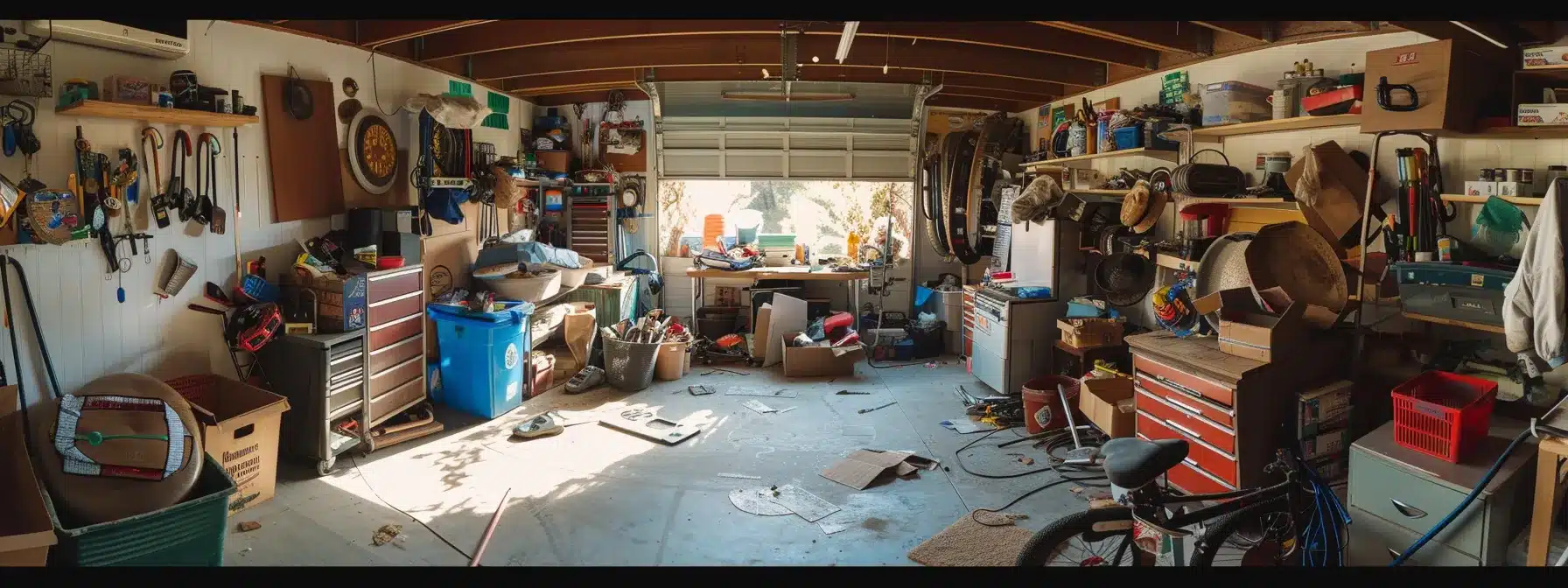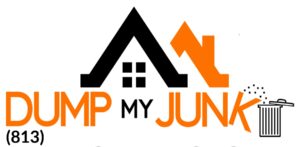DIY vs Professional Kitchen Demolition: A Cost Perspective
- Account Request Form: To receive a quick online estimate, please fill out the form below. One of our account managers will respond within a few minutes. If you need immediate assistance, you can schedule a free, no-obligation quote here or call us directly at 813-592-7922 to speak with a representative.
For Quick Service Please Fill Out The Form Below
Call to schedule a pickup at 813-592-7922
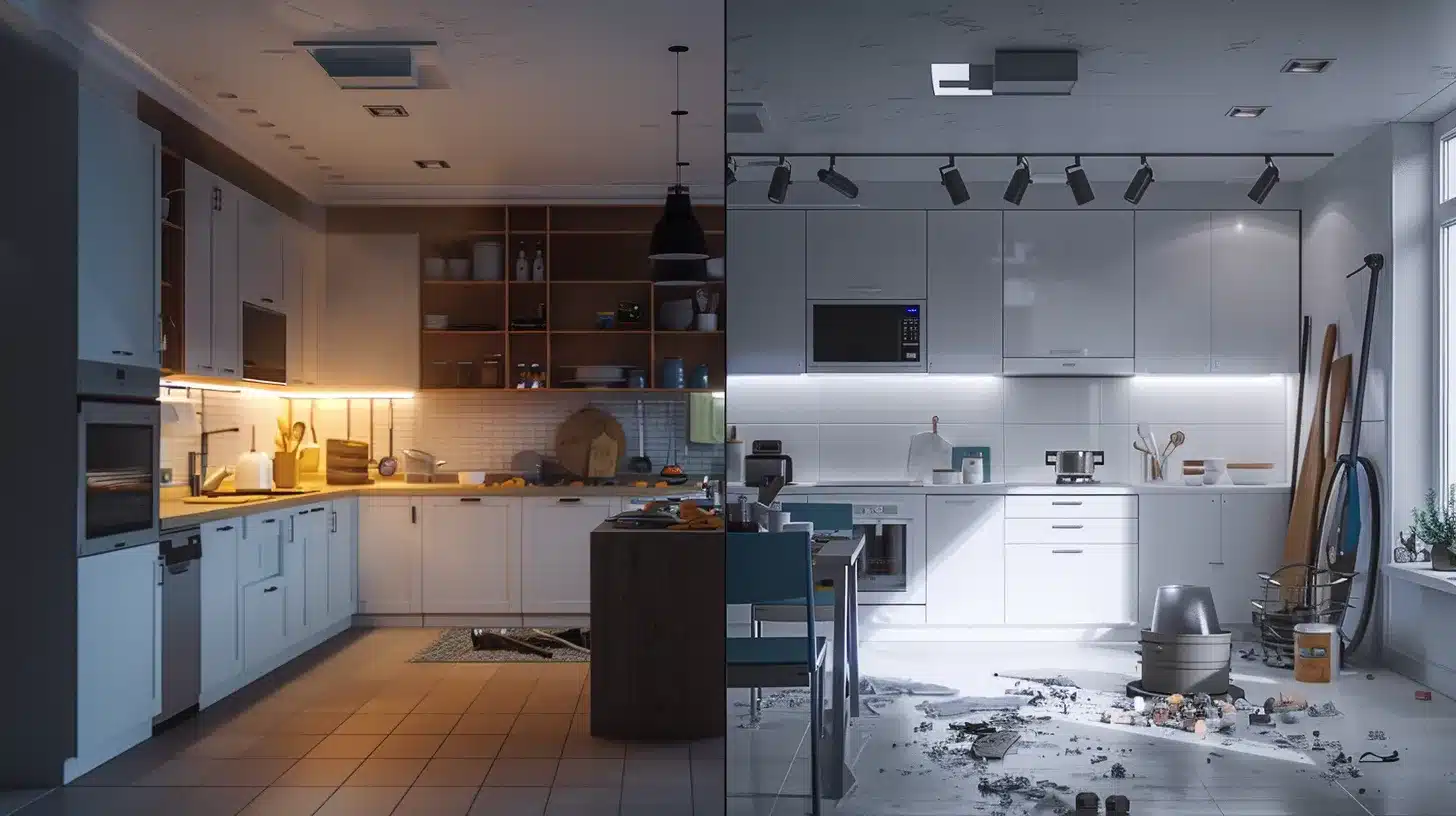
Table Of Contents:
- DIY vs Professional Kitchen Demolition: A Cost Analysis
- Key Takeaways
- Understanding Kitchen Demolition and Its Importance
- Analyzing Costs of DIY Kitchen Demolition
- Evaluating Professional Kitchen Demolition Costs
- Comparing the Financial Impact of DIY vs. Professional Demolition
- Weighing Time and Efficiency in Kitchen Demolition Choices
- Assessing Quality and Safety Implications of Each Approach
- Conclusion
DIY vs Professional Kitchen Demolition: A Cost Analysis
Are you considering a kitchen renovation and weighing the options between DIY demolition and hiring professionals? This decision can significantly impact your budget and the project's overall success. This article analyzes the costs of both approaches, evaluates efficiency and time requirements, and assesses quality and safety implications. By understanding these factors, homeowners can make informed choices that save money and reduce stress during the kitchen demolition process. Engage with this content to find the best solution for your renovation needs.
Key Takeaways
- Professional kitchen demolition ensures safety and compliance with local building codes
- DIY projects may lead to hidden costs and complications during renovations
- Engaging experts can streamline the demolition process and enhance efficiency
- Evaluating costs and timelines is crucial for effective kitchen renovation planning
- Proper safety measures are essential for avoiding health risks during demolition efforts
Understanding Kitchen Demolition and Its Importance
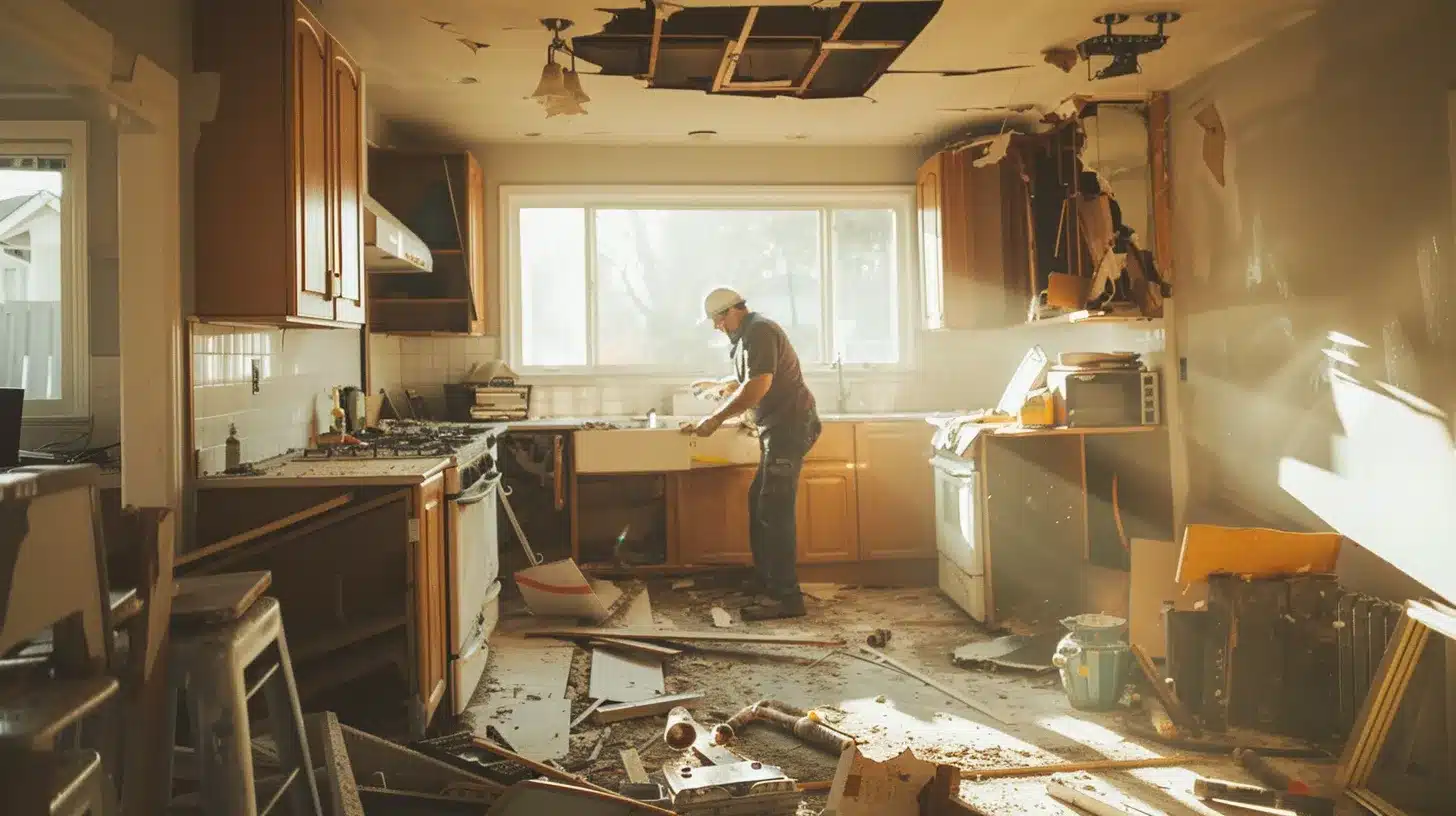
kitchen demolition involves the careful removal of existing fixtures and structures to prepare for renovations or upgrades. Common reasons for this process include addressing issues like mold growth, improving lighting, or replacing outdated elements such as dishwashers and drywall. Understanding these key objectives sets the stage for exploring the steps involved and the benefits of professional versus DIY approaches.
Defining Kitchen Demolition and Its Key Objectives
Kitchen demolition is a critical step in preparing for a renovation, focusing on the removal of existing cabinetry, walls, and other fixtures. This process is essential for improving accessibility, addressing structural issues, or modernizing the space in places like New York City. Understanding the objectives of kitchen demolition helps homeowners decide whether to undertake this task themselves or hire professionals, especially when considering the implications of a bathroom remodel. Kitchen demolition
- Removal of outdated cabinetry and walls to enhance space.
- Improvement of accessibility in the kitchen.
- Addressing potential issues like mold or structural damage.
- Facilitating upgrades that promote better lighting and functionality.
Identifying Typical Reasons for Kitchen Demolition
Identifying typical reasons for kitchen demolition plays a vital role in planning an effective kitchen remodel. Homeowners often choose to undergo this process to eliminate waste, such as outdated countertops and flooring, that detracts from the overall functionality of the space. Additionally, improving ventilation and addressing other structural concerns are common motivations, ensuring that the kitchen not only looks modern but also meets safety and efficiency standards.
- Elimination of waste from outdated elements.
- Focus on enhancing kitchen functionality.
- Improvements in ventilation to promote a healthier environment.
- Addressing structural issues that may arise from wear and tear.
Overview of What Is Involved in the Process
The kitchen demolition process involves several critical stages that can impact overall demo costs, particularly when deciding between a DIY approach and hiring a general contractor. Initially, homeowners must evaluate the removal of kitchen cabinets and other fixtures while ensuring that the ceiling and walls are not compromised during the process. Engaging a professional not only streamlines this home renovation but also ensures adherence to safety standards, reducing the risk of costly mistakes that could arise from a DIY effort.
Understanding the tasks ahead is key. Next, it's time to look at the costs involved in doing it yourself.
Analyzing Costs of DIY Kitchen Demolition
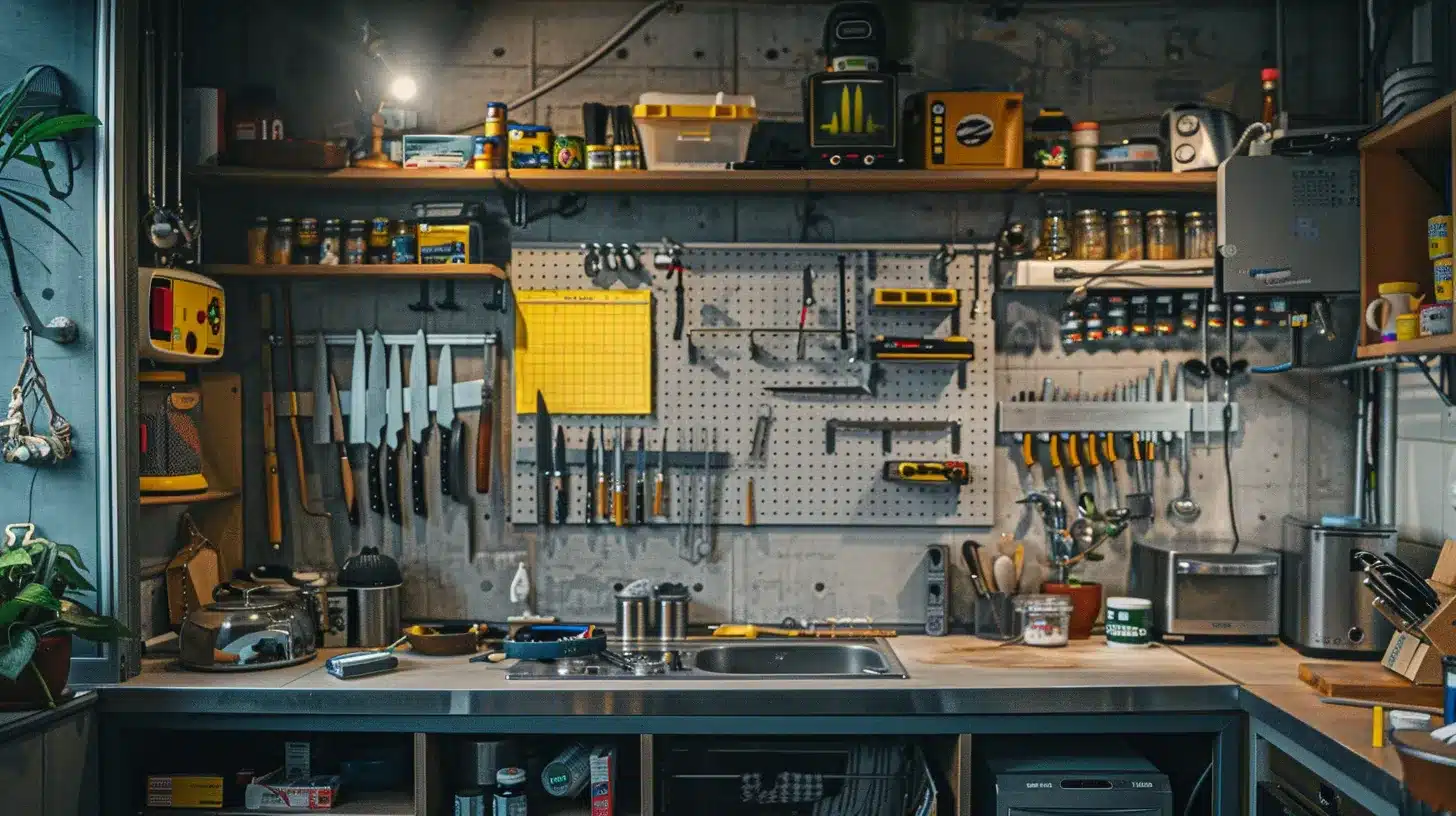
When considering DIY kitchen demolition, a detailed breakdown of project expenses is essential. Evaluating the costs of tools and materials, such as laminate flooring and brand-specific installations, helps homeowners make informed decisions. Estimating time and labor expenses, along with factoring in potential unexpected costs, ensures a realistic budget, ultimately aiding in effective planning and execution.
Detailed Breakdown of DIY Project Expenses
A detailed breakdown of DIY project expenses reveals several key considerations that homeowners should keep in mind. The initial price of tools and materials can vary significantly based on quality and the specific requirements of the demolition process, such as inspection fees for mold remediation and potential asbestos abatement. Homeowners must also factor in costs associated with any necessary contracts for disposing of hazardous materials, as failure to address these issues can lead to unexpected expenses and delays in the renovation. Construction debris removal
Evaluating Tools and Materials Required for DIY
When evaluating tools and materials required for DIY kitchen demolition, homeowners must consider several factors to ensure a safe and effective process. Essential tools such as sledgehammers, crowbars, and pry bars are necessary for removing cabinetry and fixtures. Furthermore, addressing hazards like mold or asbestos requires specialized equipment; thus, homeowners might need to invest in professional mold remediation services or asbestos removal if detection occurs.
Estimating Time and Labor Expenses for DIY Efforts
Estimating time and labor expenses for do it yourself kitchen demolition requires careful planning and consideration. Homeowners must account for various tasks such as removing cabinetry, handling debris, and addressing potential issues like water damage or mold. Setting aside sufficient time for each step ensures a more efficient renovation and helps avoid unexpected installation costs that can arise from rushed efforts. Consistently tracking progress and adjusting timelines as needed will lead to a smoother project experience:
- Assessing the extent of the interior demolition needed.
- Calculating the time required for each phase of the project.
- Maintaining a budget by factoring in estimated labor hours.
- Planning for the safe disposal of debris.
- Allowing flexibility for potential setbacks, such as addressing water damage.
Considering Potential Unexpected Costs in DIY Projects
When engaging in DIY kitchen demolition, potential unexpected costs can arise that may significantly impact the overall budget. For instance, the discovery of mold behind walls or under the sink can necessitate additional remediation expenses, which could have been avoided had professional demolition contractors handled the project. Moreover, budgeting for recycling materials responsibly, such as appliances or cabinets, is essential; improper disposal of debris could lead to fines and added costs, emphasizing the need for meticulous planning throughout the demolition process.
DIY can save money, but it comes with risks and hidden costs. To find the best choice, one must consider what professionals bring to the table in kitchen demolition.
Evaluating Professional Kitchen Demolition Costs
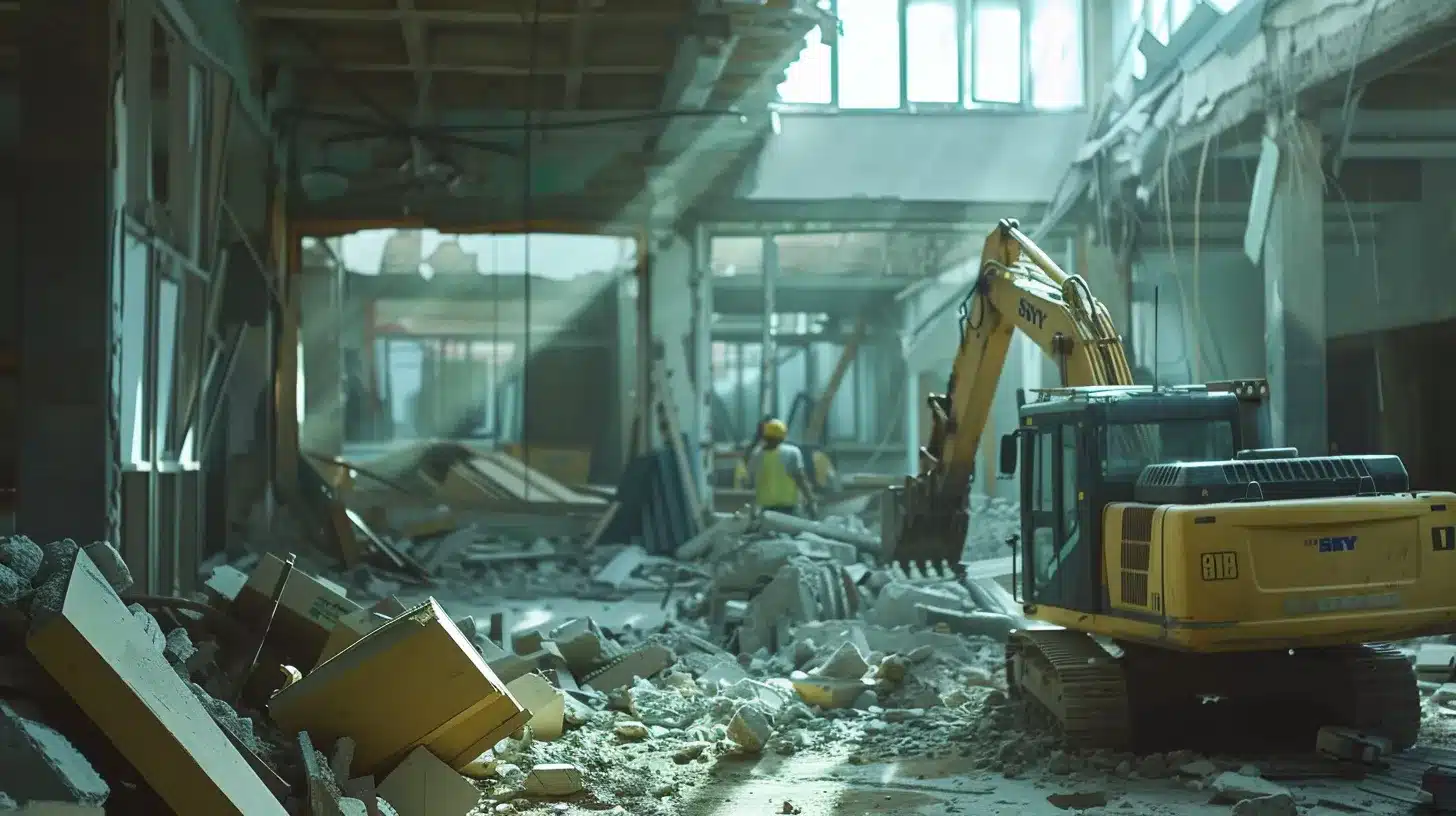
Understanding the cost structure of hiring a professional kitchen demolition service is essential for homeowners contemplating their options. This involves comparing service levels and pricing models among contractors, assessing warranties and insurance considerations, and recognizing how professional expertise can affect overall expenses. Each factor plays a crucial role in ensuring compliance with building codes, especially when safety concerns like asbestos or mold are present, ultimately leading to a more efficient and secure renovation process.
Cost Structure of Hiring a Professional Service
Hiring a professional kitchen demolition service offers distinct advantages, especially when it comes to navigating the complexity of removing materials such as marble countertops, stainless steel appliances, and managing electrical wiring. Professionals understand how to dismantle structures safely while adhering to local regulations, minimizing the risk of potential damages such as pipe leaks or other hazards. This expertise not only enhances safety but also often proves more cost-effective in the long run, preventing expensive mistakes and ensuring a smoother renovation process.
- Expert handling of complex materials like marble and stainless steel.
- Safe management of electrical wiring and plumbing connections.
- Compliance with local regulations to avoid penalties.
- Prevention of costly mistakes during the demolition process.
Comparing Service Levels and Pricing Models Among Contractors
When comparing service levels and pricing models among contractors for kitchen demolition, homeowners should consider variations in demolition costs based on the complexity of the project. Certain contractors may offer comprehensive packages that address room layouts and specialized installations, including the removal of bathtubs or fixtures, while others might present a more basic service model. Evaluating these differences allows homeowners to select contractors who not only meet their budgetary requirements but also effectively manage potential issues such as indoor mold or structural integrity.
Assessing Warranties and Insurance Considerations
When assessing kitchen demolition services, it's essential for homeowners to evaluate warranties and insurance considerations thoroughly. Reputable contractors often provide warranties for their work, which ensures that any complications arising from hazardous waste removal or structural issues, such as water damage from a flood, will be addressed. Additionally, confirming that contractors carry liability insurance is crucial for protecting the homeowner's property, including areas like the roof, during the demolition process. This proactive approach mitigates safety risks and helps avoid unexpected removal costs that can escalate if issues arise.
Understanding the Impact of Professional Expertise on Overall Costs
Engaging professional contractors for kitchen demolition can significantly influence overall costs. Their expert knowledge ensures safe removal of materials such as quartz countertops and concrete structures, minimizing the risk of damage during the process. This proficiency not only reduces the likelihood of costly mistakes, such as improper disposal of hazardous materials, but also prepares the space efficiently for subsequent renovations, be it bathroom demolition or kitchen upgrades.
When weighing kitchen demolition costs, choices emerge like shadows. The next step is to consider how DIY efforts stack against professional help, revealing both risks and rewards.
Comparing the Financial Impact of DIY vs. Professional Demolition

Identifying direct cost differences between DIY and professional kitchen demolition highlights significant variations in expense, especially when considering materials such as granite. Exploring the long-term financial implications of each option reveals the potential for ongoing costs or savings. Additionally, evaluating the risk of hidden costs from contamination or unexpected issues ensures homeowners make informed decisions on their kitchen renovation journey.
Identifying Direct Cost Differences Between Approaches
Identifying direct cost differences between DIY and professional kitchen demolition reveals significant variances essential for homeowners planning a renovation. While engaging interior demolition contractors may incur higher upfront costs, the expertise ensures that tasks involving complex materials like steel are handled safely and effectively. In contrast, a DIY approach may initially seem cost-effective, but homeowners should be mindful of potential hidden expenses from improper disposal of building materials or additional repairs stemming from mistakes during the cooking space transformation.
Exploring Long-Term Financial Implications of Each Option
Choosing between DIY and professional kitchen demolition has long-term financial implications that can affect a homeowner's investment. While DIY projects often appear cost-effective at first glance, unexpected expenses such as disposal fees for hazardous materials or necessary home improvements, like basement waterproofing, can arise, leading to higher overall costs. On the other hand, hiring professionals ensures safe handling of complex demolition tasks, with the potential for better long-term value in a kitchen renovation due to adherence to building codes and reduced risk of future issues.
Evaluating Potential for Hidden Costs in Both Methods
When homeowners embark on a kitchen demolition, understanding the potential for hidden costs in both DIY and professional methods is vital. For instance, a DIY project may reveal unexpected expenses, such as dealing with a popcorn ceiling, which could require specialized tools or a handyman's assistance for safe removal. Additionally, uncovering damage behind walls, like mold near chimney areas or under tile flooring, can lead to unforeseen costs that complicate the renovation process.
The choice between doing it yourself or hiring a pro can change everything about your kitchen. Next, consider how time and efficiency shape your decision in kitchen demolition.
Weighing Time and Efficiency in Kitchen Demolition Choices
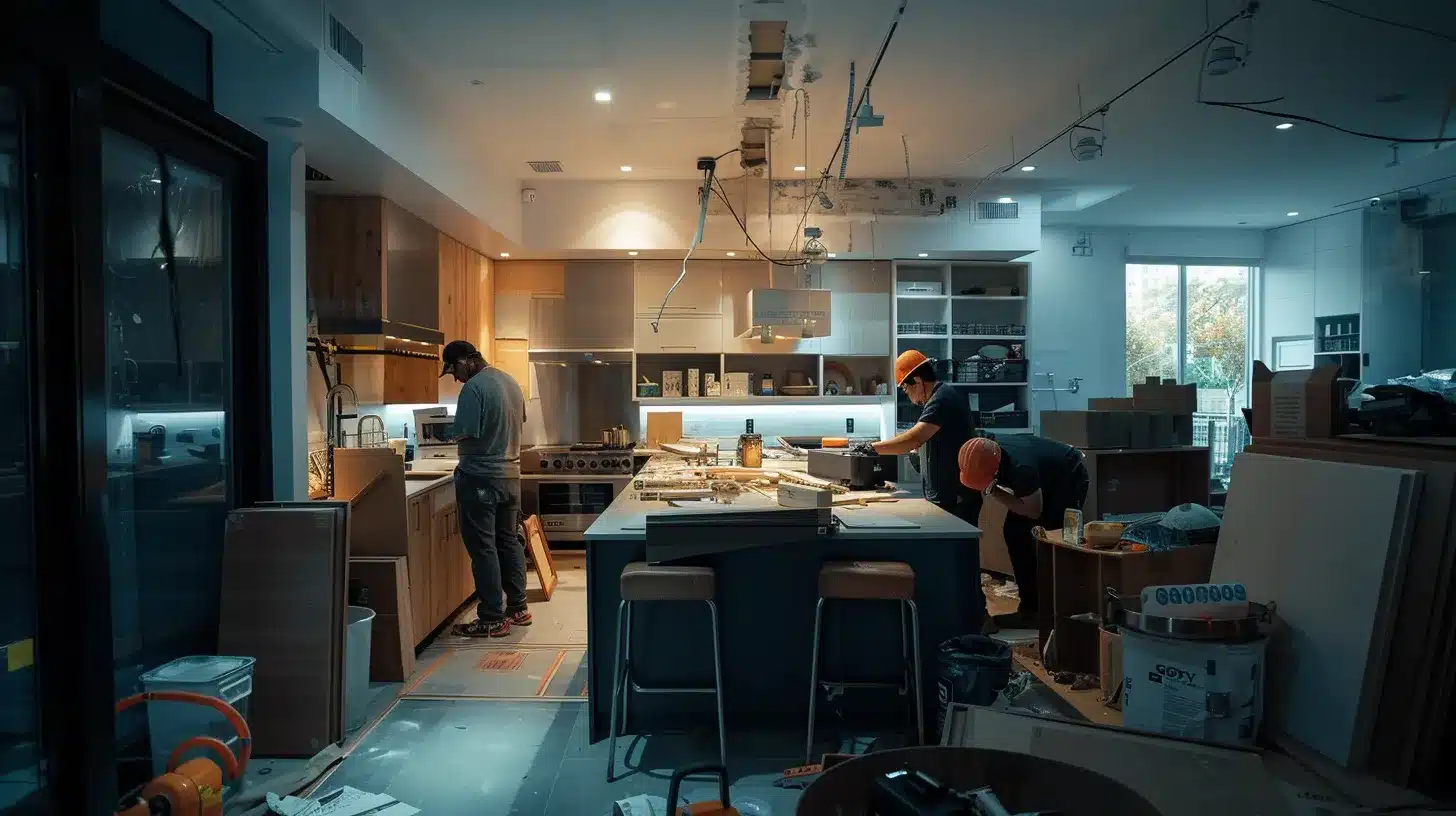
Timeline expectations for DIY demolition projects often hinge on the homeowner's availability and skill set, potentially leading to delays and remediation costs from unforeseen issues like mold removal. In contrast, professional services offer structured timelines with flexibility for scheduling, ensuring a swift process. Assessing the impact of time efficiency can illuminate how these factors affect overall costs, guiding homeowners in making informed choices.
Timeline Expectations for DIY Demolition Projects
For homeowners choosing DIY kitchen demolition, establishing a realistic timeline is essential to ensure a smooth project. Factors such as personal skill level, the extent of the demolition, and potential complications can significantly affect the duration. For example, the time taken to remove cabinetry and address issues like mold can extend the overall timeline, leading to delays that impact subsequent renovations. Understanding these aspects can help homeowners better plan their projects and avoid unexpected holdups, ultimately leading to a more efficient and effective kitchen transformation.
Professional Timelines and Scheduling Flexibility
Professional kitchen demolition services offer structured timelines that enhance efficiency and ensure timely project completion. These experts are equipped to navigate complexities, allowing homeowners to focus on other aspects of their renovations. With scheduling flexibility, professionals are often able to adjust their timelines to accommodate unforeseen issues, ensuring that the renovation process proceeds smoothly and on schedule:
- Clearly defined project timelines.
- Ability to handle unexpected complications effectively.
- Minimized delays during the renovation process.
Assessing the Impact of Time Efficiency on Overall Costs
Time efficiency directly influences overall costs in kitchen demolition projects. Homeowners opting for DIY may encounter delays stemming from their lack of experience, which could lead to higher expenses as they navigate unexpected challenges. Conversely, professional services streamline the demolition process, often completing tasks more swiftly and effectively, ultimately resulting in cost savings and a smoother transition to subsequent renovation phases.
Time and efficiency matter in kitchen demolition, but so do quality and safety. As the old walls come down, thoughts turn to what lies ahead and the decisions that will shape the results.
Assessing Quality and Safety Implications of Each Approach
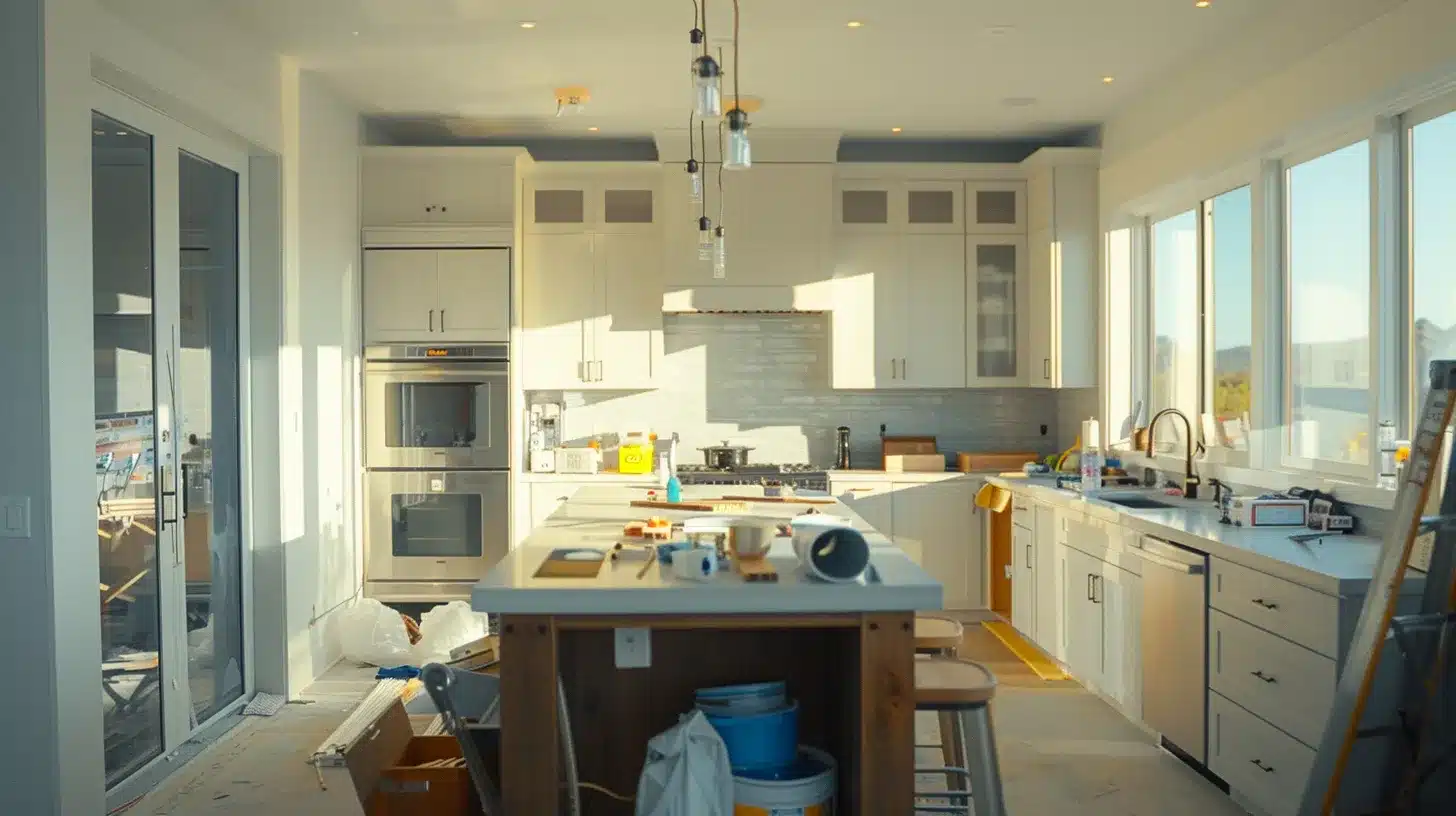
Evaluating safety considerations is crucial for DIY demolitions, as homeowners must manage hazards such as mold and structural integrity. Understanding quality control measures in professional work highlights how experts maintain high standards and compliance with building codes. Discussing the value of professional guidance in complex projects underscores the benefits of leveraging expertise to ensure safe and efficient kitchen renovations.
Evaluating Safety Considerations for DIY Demolitions
Evaluating safety considerations for DIY demolitions is essential to prevent accidents and health hazards. Homeowners tackling kitchen demolition must be aware of potential risks, such as exposure to mold or asbestos, which could arise from removing old materials. Proper protective gear, like masks and goggles, is crucial when handling debris; however, without the experience that professionals bring, individuals may overlook safety protocols, leading to costly health-related issues that could easily be avoided.
Understanding Quality Control Measures in Professional Work
Understanding quality control measures in professional kitchen demolition is essential for ensuring safe and effective renovations. Professionals utilize systematic approaches that include thorough assessments of materials, adherence to safety regulations, and consistent inspections throughout the demolition process. This structured method not only minimizes hazards such as mold or structural damage but also aligns the project with local building codes, ultimately ensuring a higher standard of work and better end results.
Discussing the Value of Professional Guidance in Complex Projects
Engaging professional guidance in kitchen demolition can significantly enhance the safety and quality of the project, particularly when complexities arise. Professionals possess the expertise to handle intricate tasks, such as managing electrical wiring or properly disposing of hazardous materials, ensuring compliance with local regulations. Homeowners benefit from this expertise, as it minimizes risks and provides peace of mind during a potentially challenging renovation process:
- Expert handling of electrical and plumbing systems.
- Safe disposal of hazardous materials.
- Ensuring adherence to local building codes.
Conclusion
In analyzing DIY versus professional kitchen demolition, homeowners must weigh initial costs against potential hidden expenses and safety risks. While DIY efforts may offer lower upfront prices, professional services provide expertise that can prevent costly mistakes and ensure compliance with safety regulations. Choosing the right approach not only impacts budget but also affects the overall efficiency and quality of the renovation process. Ultimately, understanding these factors empowers homeowners to make informed decisions that align with their renovation goals.
Dump My Junk LLC Covers the Following Towns nearby
Pinellas County, Florida Parkside Colony, Palm Harbor, Pinellas County, Parkside Villas, Dunedin, Indian Shores, Gulfport, Largo, Treasure Island, Indian Rocks Beach, Clearwater, Seminole, St. Petersburg, Safety Harbor, Parkside East Lake, Clearwater Beach, Pinellas Park, St Pete Beach, Madeira Beach, Downtown St. Pete, Historic Old Northeast, Snell Isle, Isla del Sol, Junk Removal near me




